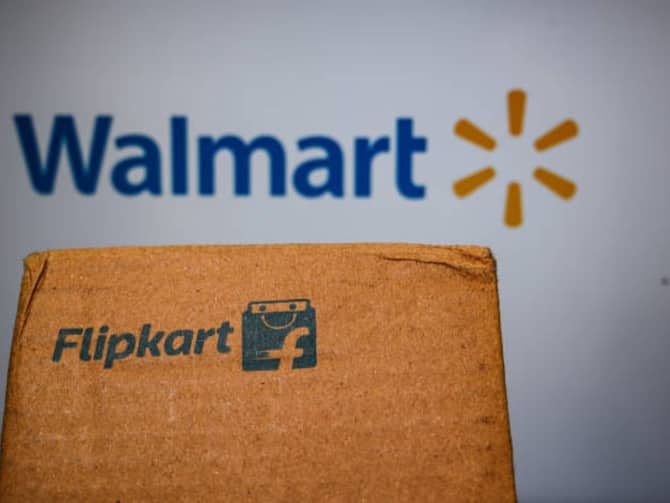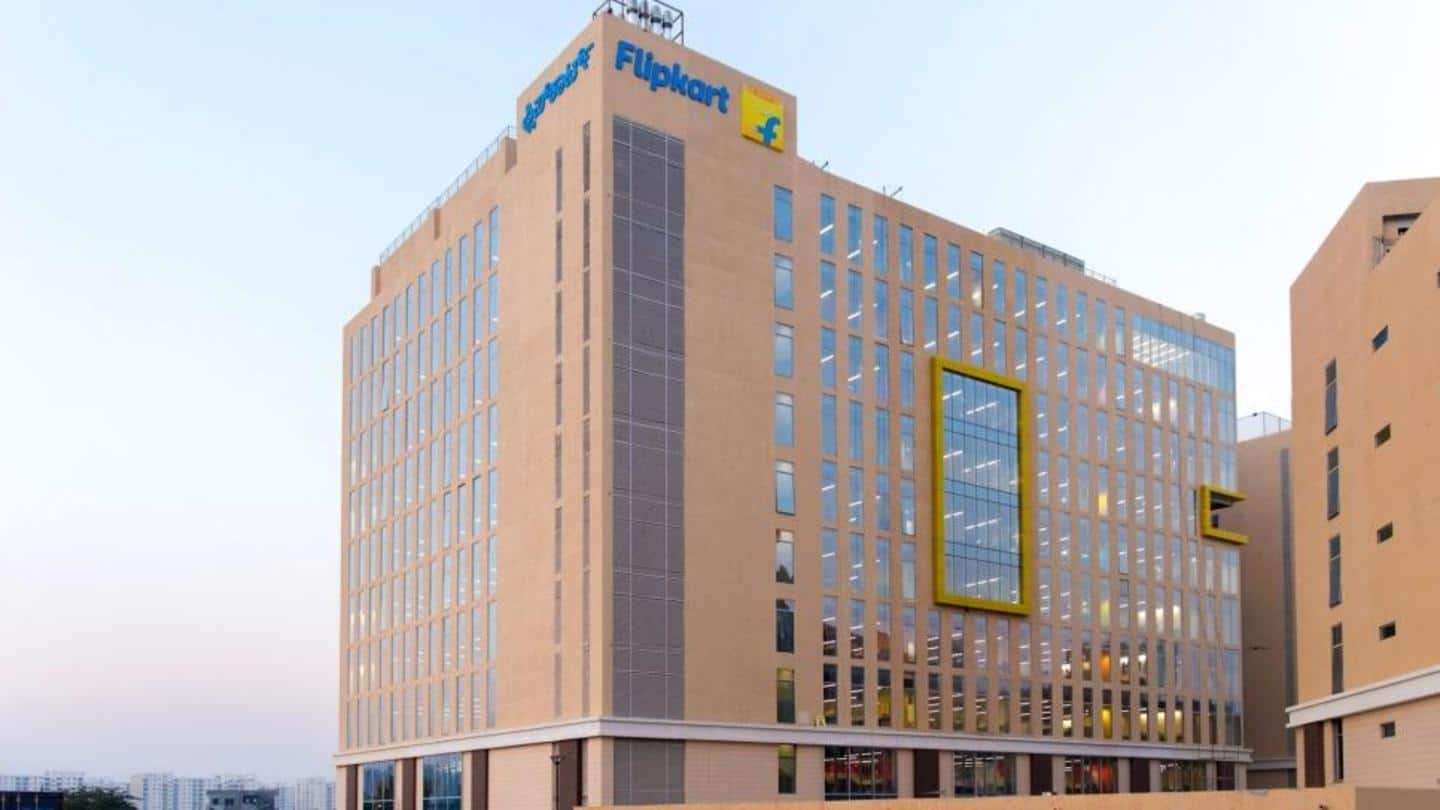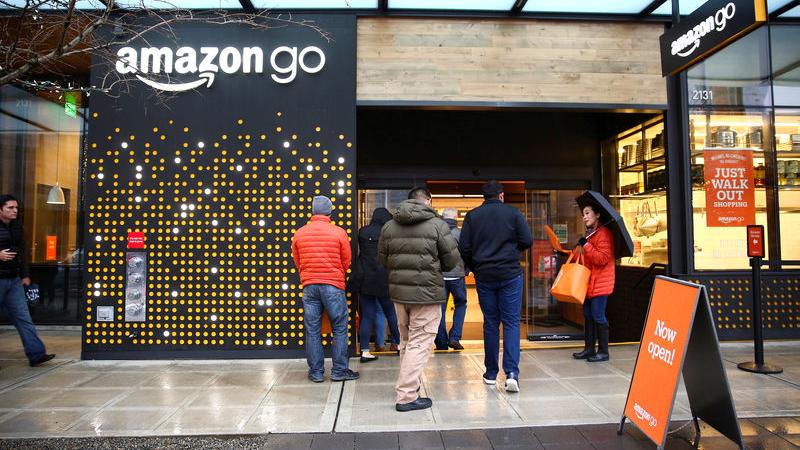Flipkart’s net loss increases by 51% to Rs 4,362 crores in FY22.

Flipkart’s net loss increases by 51% to Rs 4,362 crores in FY22. Flipkart competes with Amazon, Reliance’s JioMart, Tata Group, and SoftBank-backed Meesho, all of which were running parallel sales events. Flipkart’s net loss in the previous fiscal year was the highest in four years, owing to increases in legal, marketing, transportation, and warehousing costs.
According to regulatory documents obtained from business intelligence platform Tofler, Flipkart Internet Private Limited, also the marketplace arm of the current Walmart-owned e-commerce giant, posted a 31% year-on-year increase in revenue to Rs 10,659 crore for the fiscal year 2021-22 (FY22), despite a 51% increase in net loss to Rs 4,362 crore.
The company’s total current expenses for FY22 were Rs 15,020 crore, up 36% from the previous year, owing primarily to expenses related to the order deliveries, advertisements and promotions, and the employee benefits.
Flipkart Internet also spent Rs 5,045 crore on logistics services, a 46 percent increase over the previous year. Advertising and promotional expenses nearly doubled to Rs 1,945 crore from Rs 1,073 crore in FY21, while repairs and maintenance expenses more than doubled to Rs 1,939 crore also from Rs 1,286 crore.
Revenue came from a variety of sources, including the marketplace, collection, logistics, storage, and advertisements. Revenue from marketplace services increased to Rs 2,823 crore from Rs 2,794 crore in FY21. Advertisement revenue increased by 50% year on year to Rs 2,083 crore. Revenue from logistics services increased by 57% to Rs 3,848 crore.
Myntra Designs Private Limited, a Walmart-owned fashion retailer, reported FY22 revenue of Rs 3,610 crore, a 46 percent increase year on year. According to Tofler, the company also reported a current net loss of Rs 597 crore for the same year, a 40% increase from the previous fiscal year. The total expenditure for the fiscal year was reported to be Rs 4,206 crore.
Amazon Seller Services, the American e-commerce giant’s Indian marketplace arm, reported Rs 21,633 crore in revenue for FY22 in September, a 32% increase over the previous year.
According to Tofler, the company reported a total net loss of Rs 3,649 crore for the FY22. This was a 23% decrease from FY21. For the fiscal year, the company’s total expenses were Rs 25,283 crore.
Flipkart recently announced that it had exceeded 1 billion customer visits on its new platform during the recent e-commerce firm’s eight-day festive sale event, The Big Billion Days (TBBD). According to sources, over 700 million customers visited the event last year.
Flipkart competes with Amazon, Reliance’s JioMart, Tata Group, and SoftBank-backed Meesho, all of which were running parallel sales events. According to industry estimates, all of them are vying for a piece of the $45-50 billion e-commerce market, also which is expected to grow to $350 billion by 2030.
During TBBD, more than 60% of customers came from Tier-2 and Tier-3 cities, demonstrating the country’s widespread adoption of e-commerce.
According to filings with the US Securities and Exchange Commission by parent company Walmart, Flipkart spent $1.1 billion from February 1 to July 31. (SEC). This included spending on mergers and acquisitions, capital expenditure, and working capital requirements for the e-commerce platform, as well as Myntra, the fashion arm, and PhonePe, the payments platform. Flipkart’s investment in its supply chain and data centers was also included.
In a recent interview, Flipkart Chief Executive Officer Kalyan Krishnamurthy stated that in an uncertain macroeconomic environment, the company would be more cautious in investing in acquisitions and businesses. He stated that the company would focus more on growing the bets it made in the previous 12-18 months, such as health and travel, as well as externalizing its supply chains.
Flipkart takes the lead as e-commerce firms gross 40,000 crores during the festive season-
According to a report by the Redseer Strategy Consultants, then online retail platforms also clocked 40,000 crore during the most recently concluded festive season sale, representing a robust 27% year-on-year growth.

According to Sanjay Kothari, associate partner at Redseer Strategy Consultants, Walmart-owned Flipkart Group maintains its leadership position with a 62% market share in GMV in the very first week of the festive sale.
According to the report, Amazon’s market share was around 26% during the holiday sale, while other online retailers had a 12% market share.
Meanwhile, an Amazon representative told Fortune India that the online retailer is unable to comment on the Redseer report. “We saw the most highest ever to start to the event in the very first 48 hours, with 8X sales compared to typical business days. This main response is reflected across all categories, and we have seen a significant increase in visitors compared to 2021 “According to the spokesperson, the seller community received significantly more orders than last year.
E-commerce marketplaces typically hold up to the three sales leading up to the Diwali festival. The first of these sales is usually the largest, accounting for more than 60% of total sales during the holiday season. Between September 22 and September 30, all online retail platforms held events during the first week of the festive sale.
In terms of order volumes, Meesho emerged as the second largest player, with a low average order volume and high penetration in Tier-2 cities, capturing around 21% of the market share, while Flipkart Group leads here as well, according to Kothari.
According to the report, mobile phones continue to lead the market, accounting for 41% of total gross merchandise value (GMV). “Mobile as a category continued moreover to lead GMV share, accounting for 41% of GMV, or 56k mobiles sold per hour. Fashion, on the other hand, contributed 20% of GMV, which increased 48% year on year from the previous festive sale.
“Kothari says the number of transacting shoppers increased by 24% year on year, with approximately 65% of shoppers coming from Tier 2 cities. During the festive sale, 75-80 million shoppers placed orders across all platforms. Tier 2 cities saw the greatest year-on-year increase in online shoppers.
According to the report, the average spend per online shopper increased by 3% during the recently concluded festive week.
While demand was slow in the first quarter, Redseer saw a significant increase in consumer sentiment and consumption patterns in late August and September. According to the consulting firm, this will lead to further demand recovery in the run-up to Diwali. Walmart is mostly reportedly raising up to $3 billion for its e-commerce subsidiary Flipkart to expand its operations in the country.
With new funds, Flipkart’s valuation is expected to rise to more than $40 billion, providing a boost to the Indian funding scene, which is experiencing a difficult winter.
Flipkart Group raised $3.6 billion in July of last year to grow and advance India’s digital commerce ecosystem. Following the money, the investment valued the group at $37.6 billion.
According to media reports, Walmart’s fundraising may bring in strategic investors for Flipkart.
According to insiders, the move is intended to keep Flipkart ahead in the e-commerce race as online shopping surges during the country’s festive seasons.
According to Tofler data, Amazon Seller Services Private Ltd’s losses decreased to Rs 3,649.2 crore in FY22 from Rs 4,748.1 crore in FY21. Operations revenue increased by 32.4% to Rs 21,462 crore.
Analysts at Bernstein stated earlier this year that they do not believe the e-commerce in India will be a “winner takes all” market due to the various categories and customer segmentation. “Amazon and Flipkart continue to lead due to category strengths in mobiles and consumer electronics,” they wrote.
They pointed out that Flipkart is the market leader in apparel, while JioMart is the market leader in grocery due to its offline strength. They also stated that new players focused on Tier 2+ markets, such as Meesho, are emerging and that Nykaa is driving leadership in niche categories such as beauty.
Amazon India’s report card, they believe, is mixed after a decade in India and $6.5 billion in investments. According to the analysts, India is one of Amazon’s largest overseas markets, as well as one of its fastest-growing, with a best-in-class customer experience and a large Prime customer base.

“Yet, this expansion has come at a high cost, with over $6.5 billion+ invested to date, while profitability remains elusive (-5-10% Ebitda margins),” they said.
When reached for comment, a Flipkart spokesperson told IANS, “We do not comment on speculation.” Walmart would not comment.
In addition to Walmart, the previous fundraiser drew significant interest from global investors such as sovereign funds, private equity, and crossovers. GIC, then Canada Pension Plan Investment Board (CPP Investments), then SoftBank Vision Fund 2 and then Walmart led the investment, which also included sovereign funds DisruptAD, Qatar Investment Authority, then Khazanah Nasional Berhad, and probably marquee investors Tencent, Willoughby Capital, then Antara Capital, Franklin Templeton, and mostly Tiger Global.
“This investment by the leading global investors also reflects the promise of the digital commerce in India and also their belief in the Flipkart’s capabilities to maximize this current potential for all stakeholders,” Flipkart Group CEO Kalyan Krishnamurthy stated in July last year.
“The quality of the investor group and the valuation confirms global confidence in the Flipkart and its mission to transform commerce in India,” said Judith McKenna, President and CEO of Walmart International.
Redseer Strategy Consultants, based in Bengaluru, predicted $11.8 billion in gross merchandise value (GMV) during the entire festive month leading up to Diwali. Prior to the festival of lights, e-commerce marketplaces typically hold up to three sales.
Between September 22 and 30, also online retail platforms in India generated $5.7 billion (approximately Rs 40,000 crore) in festive sales, representing a year-on-year increase of 27 percent.
According to Redseer’s report, mobile phones will continue to lead the market with a 41% contribution to gross merchandise value (GMV), and nearly 56,000 mobile handsets are sold every hour. Flipkart Group (Flipkart, Myntra, and Shopsy) maintained its market leadership with a 62% market share in GMV.
Flipkart announced on Friday that revenues were primarily generated by operations such as e-commerce, information technology-enabled services, marketplaces, and related support services, and including corporate agent services for insurance. By creating original content or repurposing the content of other service providers, the company expanded into newer businesses such as video streaming, distribution, and hosting.
Myntra, a Flipkart group company, reported higher losses in FY22, increasing 39% to Rs 597 crore. An increase in logistics costs, as well as other promotion and advertising costs, dragged down profits. In FY22, the apparel company reported a 46% increase in the operating revenue to Rs 3,501 crore.

Third-party logistics players fulfilled approximately 40-50% of total orders. Despite having a large market share of order volume, Flipkart and Amazon fulfill the majority of their orders through their captive arms.
As the first wave of festive sales, Amazon holds the ‘Great Indian Festival’, and also Flipkart holds its ‘Big Billion Day Sale.’ This year’s Amazon event will last a full month.
Flipkart’s net loss increases by 51% due to rising transportation costs-
According to a media report on Friday, Flipkart Internet Pvt Ltd reported a net loss of 51% to Rs 4,362 crore in the fiscal year 2022. Revenues at the Walmart-owned company increased by 31% year on year to Rs 10,659 crore.
According to a report published by LiveMint, Flipkart’s net loss was caused by rising transportation, marketing, and legal costs. The e-commerce giant’s total expenses for the fiscal were Rs 15,020 crore, up from Rs 10,996 crore in the previous fiscal, while its operating revenue increased by 34% to Rs 10,477 crore in FY22, up from Rs 7,804 crore in FY21.
Flipkart’s operating loss, or the EBITDA (earnings before interest, the taxes, depreciation, and amortisation), was Rs 3,925 crore in 2021, up from current Rs 2,267 crore in the previous year. Total expenses for the company increased to Rs 10,849 crore in the FY22 from current Rs 7,178 crore in the previous fiscal year. However, the company’s transportation costs increased to Rs 5,045 crore from Rs 3,444 crore in FY21.
In FY22, the e-commerce major’s advertising and promotional expenses increased by 80% to Rs 1,946 crore from Rs 1,073 crore. Flipkart stated that its revenue was primarily generated by operations such as e-commerce, also information technology-enabled services, marketplace, and related support services such as corporate agent services for insurance.
Flipkart has also ventured into new businesses in FY22. Flipkart has reportedly expanded into video streaming, distribution, and hosting services. It has done so by creating original content or repurposing content from other service providers. The company has also engaged in advertising and promotional activities, as well as running loyalty programs.
Flipkart Internet is in charge of the Walmart-owned e-commerce giant’s marketplace. The company’s expense increase comes at a time when inflation is affecting e-commerce companies.
The increase in delivery and advertising expenses demonstrates this. These increased costs will have an impact on the company’s ability to generate profit. It remains to be seen how this will impact its future ambitions.
Edited by Prakriti Arora




